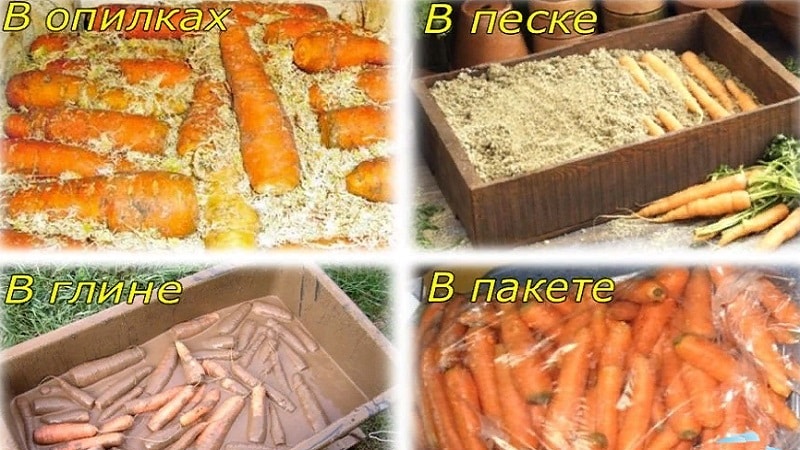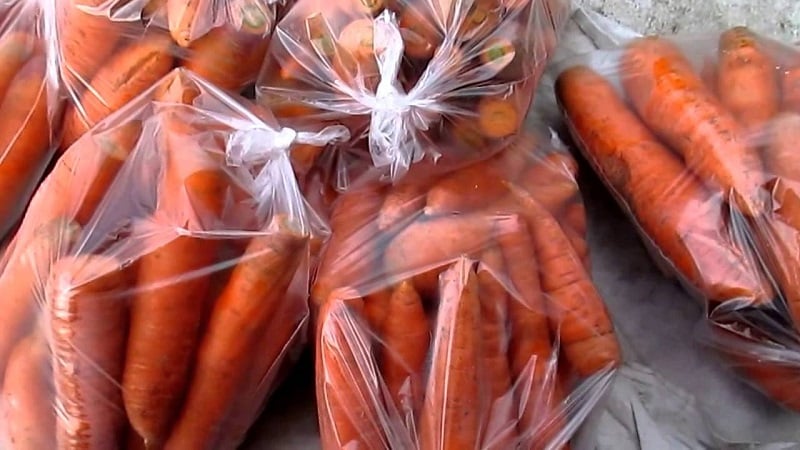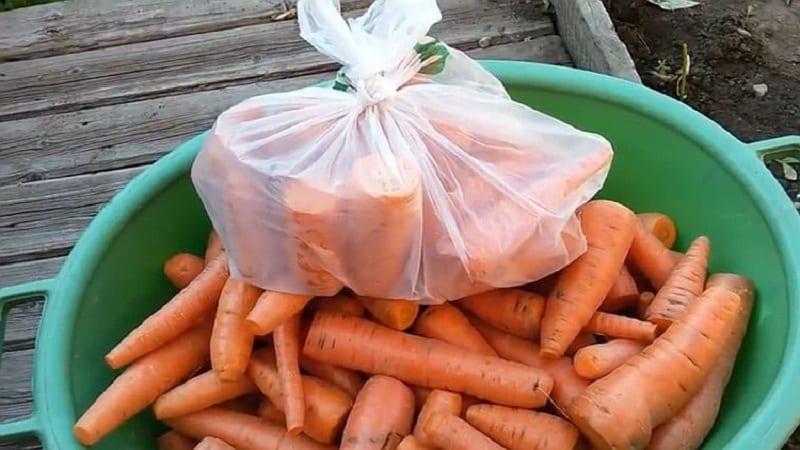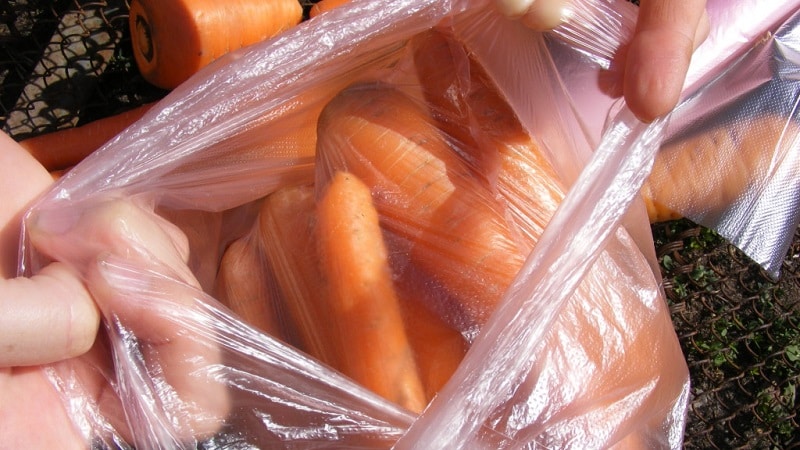Features of storing carrots in bags underground in winter
Carrots are used for cooking almost every day, so housewives try to keep them fresh for the winter. Depending on the region, the availability of a cellar, basement or other place, choose the appropriate option for preserving vegetables. In this article we will talk in detail about this method of storing carrots in bags underground for the winter.
Features of storing carrots in the cellar in winter
Cellar and the basement are the best places to store carrots in winter. Here the vegetable can be stored for 6 to 12 months. To maintain freshness and juiciness, maintain a temperature of 0 to +3°C and a humidity of 90-95%.

Vegetables are stored in the cellar in several ways:
- in sawdust - sawdust prevents carrots from drying out and at the same time takes away excess moisture;
- in sand – the sand must be dry and clean, the carrots are laid in rows and poured over;
- in wooden boxes in bulk - no more than 2-3 m high;
- in onion peels – the peels absorb excess moisture and prevent the proliferation of microorganisms and rotting;
- in plastic bags - a convenient way for short-term storage.
The room temperature should not fluctuate greatly. If necessary, disinfect the cellar with lime or copper sulfate.
Is it possible to store in plastic bags, vacuum bags, cellophane bags underground in winter?
One option is to keep root vegetables in plastic bags and plastic bags.. The shelf life of carrots this way is 4-5 months.
To preserve the harvest longer in large bags, root crops are often inspected and spoiled specimens are removed. Store in small portions up to 3 kg in plastic bags. And in vacuum bags, vegetables will only last 2-3 weeks, since due to the lack of air they will quickly deteriorate. Vacuum is used only for freezing vegetables.

Can it be stored with beets?
Carrots are stored with any other root vegetables, including beets. First, a layer of carrots is placed in the bag, then beets. Their storage conditions are the same.
Carrots, unlike beets, do not tolerate proximity to potatoes and quickly begins to fade.
Attention! Root vegetables are stored as far as possible from apples, which emit ethylene when ripe, which leads to spoilage of carrots and beets.
Pros and cons of storing in cellophane bags, plastic or vacuum bags
The advantages of such storage:
- can be stored in portions and taken from the cellar one package at a time;
- simplicity of the storage procedure;
- ease of transportation - it is easier to transport in bags than in boxes.
Minuses:
- higher probability of rot;
- the need to constantly monitor temperature and humidity - when the temperature rises, the “biological sleep” is interrupted, and the carrots begin to sprout;
- the need to create conditions under which condensation does not form.

Preparation for storage
When planning to keep root vegetables in the cellar, choose varieties, suitable for long-term storage. The most famous:
For successful long-term storage it is important timely harvest. Root crops are dug up at an air temperature of +4°C, since growth stops at this time.At sub-zero temperatures, gray rot may appear.
Before storing, vegetables are dried and cooled to 0°C.. If you place warm root vegetables in a cool cellar, rot may spread.
Clean, dry, undamaged specimens are selected for storage.. Cut off the tops, being careful not to touch the root crops. They are sorted by size. Small root vegetables have a shorter shelf life and are used first for cooking. Long, large root vegetables last longer.

Selected root vegetables are placed in bags. 10 kg sugar bags, 30 kg large plastic bags and regular plastic bags are suitable. Large bags are kept open to allow air to flow.
Cellophane bags are tied loosely and holes are made at the bottom of the bag for ventilation. Small bags are filled loosely to allow air to circulate.
Reference. Carrots produce carbon dioxide. A little of it accumulates in open bags, and it prevents the occurrence of diseases. In closed bags its concentration will be high, and the carrots will spoil.
What problems may arise during storage?
Mistresses encounter such difficulties when storing root vegetables in bags in the underground:
- The appearance of excess moisture. This problem can be eliminated by placing moss, newspapers or lime nearby - they will absorb excess moisture.
- The appearance of condensation in the bags. To prevent this, do not close the bags tightly and make holes in them. If condensation has formed, the carrots are sorted, dried and placed in dry, clean bags.
- Formation of rot. To avoid this, the ends of the carrots are dipped in ash when storing.
When kept in large plastic bags, it is difficult to see spoiled root vegetables and remove it in time.You have to sort through the root vegetables in bags once a week to monitor their condition.
Conclusion
Knowing some simple methods, you can provide yourself with tasty, fresh carrots for the whole winter. Storing in plastic bags is a simple, hygienic, economical way. Its main disadvantage is the relatively short shelf life - only 4-5 months.